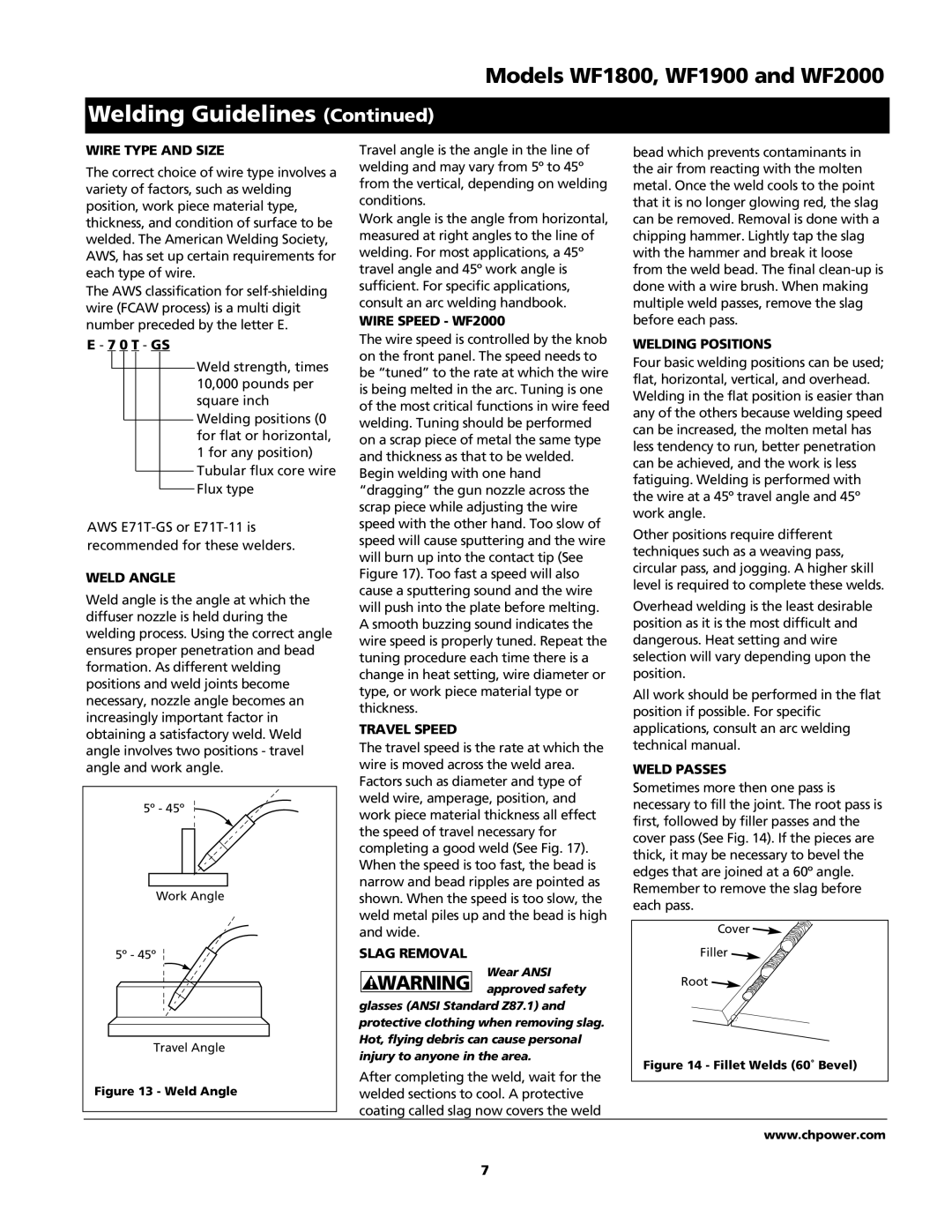WF1800, WF1900, WF2000 specifications
The Campbell Hausfeld WF2000, WF1900, and WF1800 are exceptional models in the realm of air compressors, tailored for various applications ranging from home projects to professional tasks. Each model retains a unique set of features while sharing a commitment to performance and reliability, making them popular choices among DIY enthusiasts and seasoned professionals alike.Starting with the WF2000, this model is a powerful air compressor designed to handle demanding tasks. Boasting a 2-horsepower motor, it delivers up to 7.0 CFM at 40 PSI, which ensures quick recovery times for various pneumatic tools. The WF2000 features a durable oil-lubricated design, contributing to a longer lifespan and reduced wear. Additionally, its low noise design operates at a quieter level, providing a more pleasant working environment. The 4-gallon capacity tank offers substantial air storage, making it efficient for extended use.
Next in line is the WF1900, which offers a balance of performance and portability. This model utilizes a direct drive, oil-free pump system that not only allows for easy maintenance but also offers the convenience of instant startup and less noise compared to oil-lubricated counterparts. The WF1900 is equipped with a 1.5-horsepower motor and delivers 5.4 CFM at 90 PSI, catering well to nailers, staplers, and other light to medium-duty tools. With a compact design and a weight of under 50 pounds, it emphasizes mobility, making it ideal for various job sites or home use.
Finally, the WF1800 rounds out the trio with a focus on user-friendly features. It delivers an impressive performance with a 1.8-horsepower motor, reaching 6.2 CFM at 40 PSI. Like the WF1900, it features an oil-free pump, ensuring minimal maintenance while enabling continuous operation. The 3-gallon tank supports a wide range of applications, from inflating tires to powering airbrushes. Notably, the WF1800 comes equipped with a convenient handle for easy transport, making it a versatile solution for both indoor and outdoor projects.
In summary, the Campbell Hausfeld WF2000, WF1900, and WF1800 each provide distinct advantages tailored to their intended users. From high-capacity performance to portability and user-friendly operation, these air compressors exemplify the qualities of reliability and efficiency, making them indispensable tools in any workshop. The commitment to innovation and robust design further cements Campbell Hausfeld's reputation as a leader in the air compressor market, ensuring their products meet the needs of all users.

